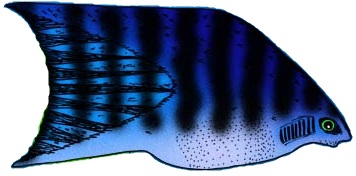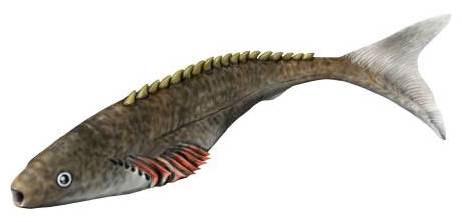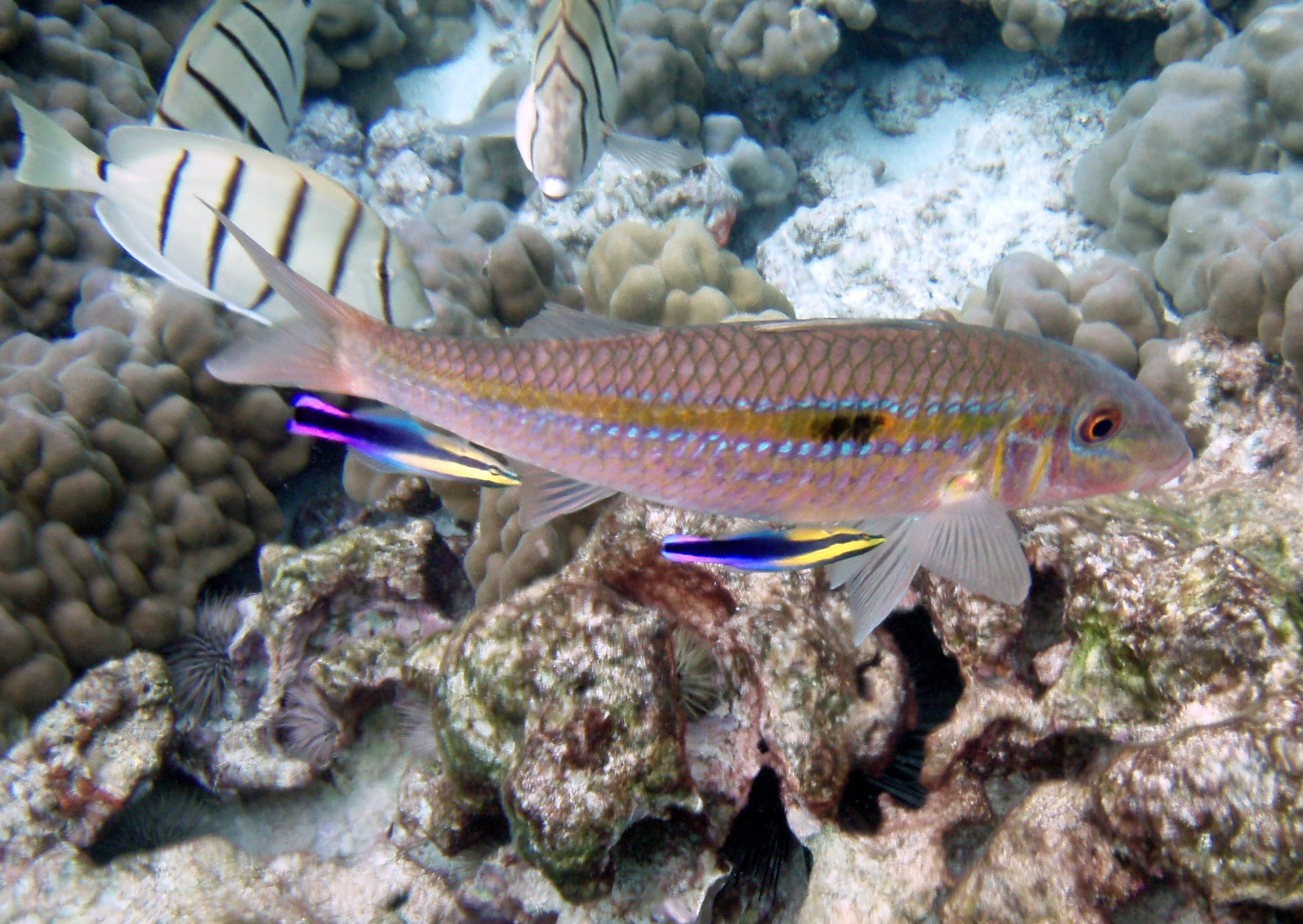|
Snake Blenny
''Ophidion barbatum'', the snake blenny, is a fish species in the family Ophidiidae. It is widespread in the eastern Atlantic from southern England to Senegal in West Africa, and the northern Mediterranean. It is a marine subtropical demersal fish, up to long. Parasites As most fish, the Snake blenny harbours a variety of parasites. One of them is the diclidophorid monogenean ''Flexophora ophidii''. The species was described in 1962 by Maria Prost and Louis Euzet Louis Euzet (27 July 1923 in Lézignan-Corbières, France – 24 September 2013 in Sète, France) was a French parasitologist. Education Louis Euzet was a high-school student in Narbonne, France, and a student of the University of Montpelli ... from the coasts of France in the Mediterranean Sea and found 58 years later off Algeria. References External links * Ophidion (fish) Fish described in 1758 Taxa named by Carl Linnaeus Fish of the Atlantic Ocean Fish of the Adriatic Sea Fish of the Med ... [...More Info...] [...Related Items...] OR: [Wikipedia] [Google] [Baidu] |
Carl Linnaeus
Carl Linnaeus (23 May 1707 – 10 January 1778), also known after ennoblement in 1761 as Carl von Linné,#Blunt, Blunt (2004), p. 171. was a Swedish biologist and physician who formalised binomial nomenclature, the modern system of naming organisms. He is known as the "father of modern Taxonomy (biology), taxonomy". Many of his writings were in Latin; his name is rendered in Latin as and, after his 1761 ennoblement, as . Linnaeus was the son of a curate and was born in Råshult, in the countryside of Småland, southern Sweden. He received most of his higher education at Uppsala University and began giving lectures in botany there in 1730. He lived abroad between 1735 and 1738, where he studied and also published the first edition of his ' in the Netherlands. He then returned to Sweden where he became professor of medicine and botany at Uppsala. In the 1740s, he was sent on several journeys through Sweden to find and classify plants and animals. In the 1750s and 1760s, he co ... [...More Info...] [...Related Items...] OR: [Wikipedia] [Google] [Baidu] |
Diclidophoridae
Diclidophoridae is a family of Monogenea, monogeneans within the order Mazocraeidea. Genera Placed by World Register of Marine Species, WoRMS: * ''Absonifibula'' * ''Allodiclidophora'' * ''Allotagia'' * ''Atlanticotyle'' * ''Bravocotyle'' * ''Campechia'' * ''Chalguacotyle'' * ''Choricotyle'' * ''Cyclobothrium'' * ''Cyclocotyla bellones, Cyclocotyla'' * ''Cyclocotyloides'' * ''Diclidophora'' * ''Diclidophoropsis'' * ''Dussumericola'' * ''Echinopelma'' * ''Eurysorchis'' * ''Flexophora'' * ''Gempylitrema'' * ''Hargicotyle'' * ''Helciferus'' * ''Hemitagia'' * ''Heterobothrioides'' * ''Heterobothrium'' * ''Hexocyclobothrium'' * ''Inbjumia'' * ''Keralina'' * ''Lampanyctophilus'' * ''Lebboia'' * ''Macrouridophora'' * ''Macruricotyle'' * ''Mamaevicotyle'' * ''Mamaevodiclidophora'' * ''Megaloncus'' * ''Neodiclidophora'' * ''Neoheterobothrium'' * ''Olivacotyle'' * ''Orbocotyle'' * ''Osphyobothrus'' * ''Papillochoricotyle'' * ''Paracyclocotyla'' * ... [...More Info...] [...Related Items...] OR: [Wikipedia] [Google] [Baidu] |
Fish Of West Asia
A fish (: fish or fishes) is an aquatic, anamniotic, gill-bearing vertebrate animal with swimming fins and a hard skull, but lacking limbs with digits. Fish can be grouped into the more basal jawless fish and the more common jawed fish, the latter including all living cartilaginous and bony fish, as well as the extinct placoderms and acanthodians. In a break to the long tradition of grouping all fish into a single class (Pisces), modern phylogenetics views fish as a paraphyletic group. Most fish are cold-blooded, their body temperature varying with the surrounding water, though some large active swimmers like white shark and tuna can hold a higher core temperature. Many fish can communicate acoustically with each other, such as during courtship displays. The study of fish is known as ichthyology. The earliest fish appeared during the Cambrian as small filter feeders; they continued to evolve through the Paleozoic, diversifying into many forms. The earliest fish wi ... [...More Info...] [...Related Items...] OR: [Wikipedia] [Google] [Baidu] |
Fish Of The Mediterranean Sea
A fish (: fish or fishes) is an aquatic, anamniotic, gill-bearing vertebrate animal with swimming fins and a hard skull, but lacking limbs with digits. Fish can be grouped into the more basal jawless fish and the more common jawed fish, the latter including all living cartilaginous and bony fish, as well as the extinct placoderms and acanthodians. In a break to the long tradition of grouping all fish into a single class (Pisces), modern phylogenetics views fish as a paraphyletic group. Most fish are cold-blooded, their body temperature varying with the surrounding water, though some large active swimmers like white shark and tuna can hold a higher core temperature. Many fish can communicate acoustically with each other, such as during courtship displays. The study of fish is known as ichthyology. The earliest fish appeared during the Cambrian as small filter feeders; they continued to evolve through the Paleozoic, diversifying into many forms. The earliest fi ... [...More Info...] [...Related Items...] OR: [Wikipedia] [Google] [Baidu] |
Fish Of The Adriatic Sea
A fish (: fish or fishes) is an aquatic animal, aquatic, Anamniotes, anamniotic, gill-bearing vertebrate animal with swimming fish fin, fins and craniate, a hard skull, but lacking limb (anatomy), limbs with digit (anatomy), digits. Fish can be grouped into the more basal (phylogenetics), basal jawless fish and the more common jawed fish, the latter including all extant taxon, living cartilaginous fish, cartilaginous and bony fish, as well as the extinct placoderms and acanthodians. In a break to the long tradition of grouping all fish into a single Class (biology), class (Pisces), modern phylogenetics views fish as a paraphyletic group. Most fish are ectotherm, cold-blooded, their body temperature varying with the surrounding water, though some large nekton, active swimmers like white shark and tuna can hold a higher core temperature. Many fish can communication in aquatic animals#Acoustic, communicate acoustically with each other, such as during courtship displays. The stud ... [...More Info...] [...Related Items...] OR: [Wikipedia] [Google] [Baidu] |
Taxa Named By Carl Linnaeus
In biology, a taxon (back-formation from ''taxonomy''; : taxa) is a group of one or more populations of an organism or organisms seen by taxonomists to form a unit. Although neither is required, a taxon is usually known by a particular name and given a particular ranking, especially if and when it is accepted or becomes established. It is very common, however, for taxonomists to remain at odds over what belongs to a taxon and the criteria used for inclusion, especially in the context of rank-based (" Linnaean") nomenclature (much less so under phylogenetic nomenclature). If a taxon is given a formal scientific name, its use is then governed by one of the nomenclature codes specifying which scientific name is correct for a particular grouping. Initial attempts at classifying and ordering organisms (plants and animals) were presumably set forth in prehistoric times by hunter-gatherers, as suggested by the fairly sophisticated folk taxonomies. Much later, Aristotle, and later still ... [...More Info...] [...Related Items...] OR: [Wikipedia] [Google] [Baidu] |
Fish Described In 1758
A fish (: fish or fishes) is an aquatic, anamniotic, gill-bearing vertebrate animal with swimming fins and a hard skull, but lacking limbs with digits. Fish can be grouped into the more basal jawless fish and the more common jawed fish, the latter including all living cartilaginous and bony fish, as well as the extinct placoderms and acanthodians. In a break to the long tradition of grouping all fish into a single class (Pisces), modern phylogenetics views fish as a paraphyletic group. Most fish are cold-blooded, their body temperature varying with the surrounding water, though some large active swimmers like white shark and tuna can hold a higher core temperature. Many fish can communicate acoustically with each other, such as during courtship displays. The study of fish is known as ichthyology. The earliest fish appeared during the Cambrian as small filter feeders; they continued to evolve through the Paleozoic, diversifying into many forms. T ... [...More Info...] [...Related Items...] OR: [Wikipedia] [Google] [Baidu] |
Ophidion (fish)
''Ophidion'' is a genus of cusk-eels. Species There are currently 29 recognized species in this genus: * '' Ophidion antipholus'' R. N. Lea & C. R. Robins, 2003 (Longnose cusk-eel) * '' Ophidion asiro'' ( D. S. Jordan & Fowler, 1902) * '' Ophidion barbatum'' Linnaeus, 1758 (Snake blenny) * '' Ophidion dromio'' R. N. Lea & C. R. Robins, 2003 (Shorthead cusk-eel) * '' Ophidion exul'' C. R. Robins, 1991 * '' Ophidion fulvum'' (Hildebrand Hildebrand is a character from Germanic heroic legend. ''Hildebrand'' is the modern German form of the name: in Old High German it is ''Hiltibrant'' and in Old Norse ''Hildibrandr''. The word ''hild'' means "battle" and ''brand'' means "sword" ... & F. O. Barton, 1949) (Earspot cusk-eel) * '' Ophidion galapagensis'' * '' Ophidion galeoides'' ( C. H. Gilbert, 1890) (Striped cusk-eel) * '' Ophidion genyopus'' ( J. D. Ogilby, 1897) (Ravenous cusk) * '' Ophidion grayi'' ( Fowler, 1948) (Blotched cusk-eel) * '' Ophidion guianense'' R. N. ... [...More Info...] [...Related Items...] OR: [Wikipedia] [Google] [Baidu] |
Louis Euzet
Louis Euzet (27 July 1923 in Lézignan-Corbières, France – 24 September 2013 in Sète, France) was a French parasitologist. Education Louis Euzet was a high-school student in Narbonne, France, and a student of the University of Montpellier (in the then “''Faculté des Sciences''”). He obtained his bachelor's degree (''Licence'') in 1947. He prepared his doctoral thesis in the Station de Biologie Marine at Sète, under the direction of Paul Mathias and Jean-George Baer; the thesis, on tetraphyllidean cestodes, was accepted on 16 June 1956. Career Louis Euzet was a junior lecturer at the Station de Biologie Marine in Sète in 1947. He was appointed Professor in the recently created “''Collège Scientifique Universitaire''” at Perpignan in 1959. He moved in 1969 to the University of Montpellier, where he established his ''Laboratoire de Parasitologie Comparée'' (Laboratory of Comparative Parasitology). He retired in 1991, became an Emeritus Professor in 1992 and ... [...More Info...] [...Related Items...] OR: [Wikipedia] [Google] [Baidu] |
Monogenea
Monogeneans, members of the class Monogenea, are a group of ectoparasitic flatworms commonly found on the skin, gills, or fins of fish. They have a direct lifecycle and do not require an intermediate host. Adults are hermaphrodites, meaning they have both male and female reproductive structures.L.A. Tubbsa et al. (2005). "Effects of temperature on fecundity in vitro, egg hatching and reproductive development of ''Benedenia seriolae'' and ''Zeuxapta seriolae'' (Monogenea) parasitic on yellowtail kingfish Seriola lalandi". ''International Journal for Parasitology''(35), 315–327. Some monogeneans are oviparous (egg-laying) and some are viviparous (live-bearing). Oviparous varieties release eggs into the water. Viviparous varieties release larvae, which immediately attach to another host. The genus ''Gyrodactylus'' is an example of a viviparous variety, while the genus ''Dactylogyrus'' is an example of an oviparous variety. Signs and symptoms Freshwater fish that become infect ... [...More Info...] [...Related Items...] OR: [Wikipedia] [Google] [Baidu] |
Fish Parasites
Like humans and other animals, fish suffer from diseases and parasites. Fish defences against disease are specific and non-specific. Non-specific defences include skin and scales, as well as the mucus layer secreted by the epidermis that traps microorganisms and inhibits their growth. If pathogens breach these defences, fish can develop inflammatory responses that increase the flow of blood to infected areas and deliver white blood cells that attempt to destroy the pathogens. Specific defences are specialised responses to particular pathogens recognised by the fish's body, that is adaptative immune responses. In recent years, vaccines have become widely used in aquaculture and ornamental fish, for example vaccines for commercial food fishes like Aeromonas salmonicida, furunculosis in salmon and Lactococcosis\Streptococcosis in farmed grey mullet, Tilapia and koi herpes virus in koi. Some commercially important fish diseases are VHS, ICH, and whirling disease. Parasites ... [...More Info...] [...Related Items...] OR: [Wikipedia] [Google] [Baidu] |







